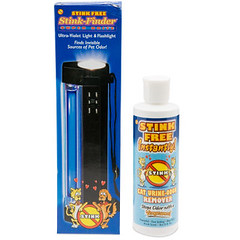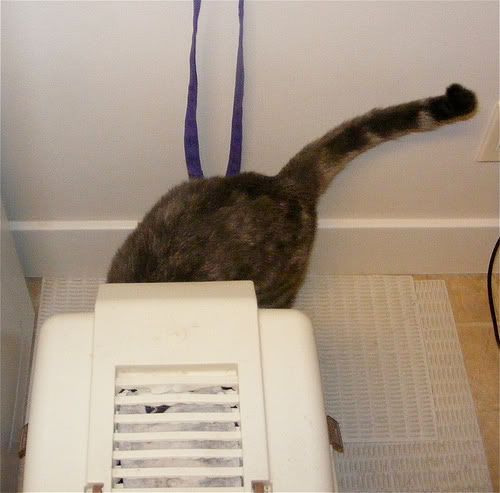Cat urine removal and how to get rid of cat smells are big challenges faced by some cat owners.
You might have read my series on cat urinating problems but today I wanted to talk about some of my favorite cat urine neutralizers.
The old school thought was that vinegar and water was a good aid but today those in the know are savvy about how is important to make sure you get all the odor and pheromones removed to prevent future soiling.
You see, animals will go back to those places that have been saturated in urine over and over again unless you take steps to clean it up correctly.
I recently was present for the entire removal of the carpeting from a home where tenants failed to address pet accidents and who did not clean up the carpeting or flooring.
The pet urine had not only saturated the carpet and carpet padding, it had also soaked down into the baseboards–leaving crystallized evidence and a stench that was amazingly hard to clean up.
Surface cleaning is not usually good enough and I cannot stress enough how important it is to use aids to help locate any accident areas, treat those areas, and totally remove the urine or fecal matter as quickly as possible.
Prevention is key but when you have a problem–address it quickly and clean it up immediately.
Over the years I have found favorite pet urine clean up aids and here are a few that I think are indispensable.
 Using a cat urine black light to help highlight and find any cat urine deposits helps you to target all the spots you might not have known about.
Using a cat urine black light to help highlight and find any cat urine deposits helps you to target all the spots you might not have known about.
Now there are many different options available today and you can buy a cat urine black light or a complete kit that  includes the black light and a cat urine neutralizer.
includes the black light and a cat urine neutralizer.
It is convenient if you want to get a kit but I have my favorite products that work to neutralize cat urine.
Many years ago, I gave a testimonial for a product nobody had heard of, today you can find it in the bigger chain stores or at the savvy independent pet business–luckily you can also purchase it online!
So just what is that favorite product for cat odor removal and for getting cat urine out of carpet? Get Serious cat urine neutralizer.
Now, there are a variety of other cat urine neutralizers such as Nature’s Miracle Advanced or Nature’s Miracle Urine Destroyer that also work well.
 Finally, make sure you have a good carpet cleaning tool such as the Bissell Little Green Pet Machine. Use it in conjunction with the odor eliminator of your choice and be sure to dry the area completely. (A hair dryer or fan can help.)
Finally, make sure you have a good carpet cleaning tool such as the Bissell Little Green Pet Machine. Use it in conjunction with the odor eliminator of your choice and be sure to dry the area completely. (A hair dryer or fan can help.)
Be sure to also check with your veterinary medical professional to rule out any veterinary medical issues that might be underlying any cat urinating problems.
In addition, a consultation with a good animal behaviorist can help you to eradicate the issue or identify the cause if it is not related to a medical condition.
You can find links to those types of referrals on the resources page (see the navigation bar).
Finally, if you have faced and addressed cat urinating problems or been successful in getting cat urine out of the carpet or have tips to share about how to get rid of cat smell in the house–leave your comment below.



